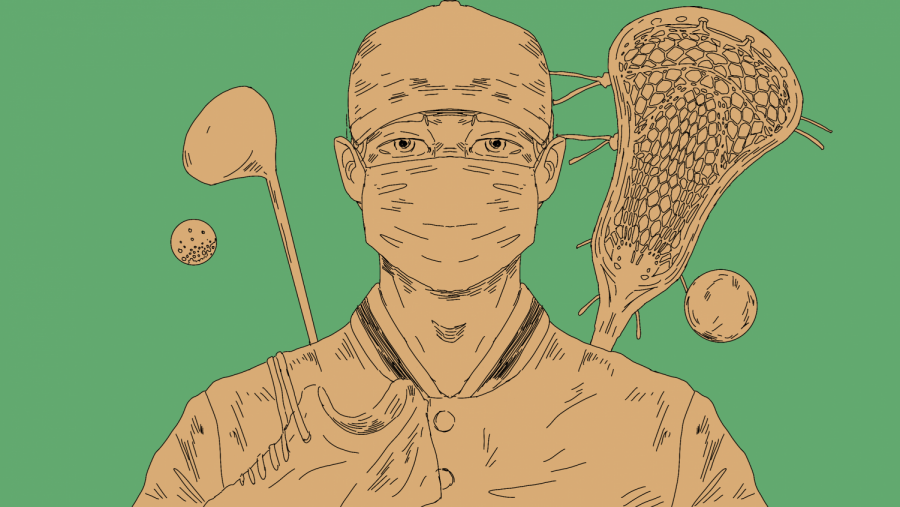Masks in Sports
Masks, in-person practice, and how Langley Sports has handled Covid
As we near the end of the VHSL winter season and the beginning of the mid-February fall season, coaches and athletes have had to seriously consider how to safely conduct in-person training, if at all. Mask-wearing (and its implementation) best illustrates how complex the situation is.
First, some background: Starting back during the spring season in 2020, the sudden cancellation of school and sports forced coaches and students to reassess how they would conduct the remainder of their seasons. Some activities, like Marching Band, shut down entirely. Others, like Track, quickly responded with workout regimes for the team. There was very little overall coordination by the county or state, and it wasn’t until fall that VHSL released its guidelines on Winter and Spring sports.
By the fall season, Clayton Stoil, a runner for Langley, was already working out on a schedule set up by the coaches and was ready for the season to start. His coaches had prepared them as well- upping the mandated six feet of distancing to eight to ten feet and making runners stay in small groups of no more than five. However, at this point, Clayton wasn’t wearing a mask. After all, the state hadn’t made any rules mandating masks. The team also felt they had taken the necessary precautions. So, for two whole weeks of conditioning, the team wasn’t wearing masks while running or exercising. And yes, the training itself was important, but the company was a welcome change.
“We want to give [students] somewhere to socialize, a break from sitting at a screen all day…” Langley lacrosse coach Katie Robinson said.
Robinson would continue to explain that she really wants to provide a safe way for students to see their friends. It was important for their mental health. Not only that, in-person is necessary for proper drilling and training for an involved team sport like lacrosse.
But the track team isn’t like lacrosse. The fundamental nature of running is that you can do it by yourself. So why in-person?
“I always need to catch the next person; I need to keep up with the next group. [In-person practice] pushes you to be faster,” said Clayton Stoil said. According to him, the competitive aspect was essential for getting the best out of himself. He could still run by himself and work out by himself, he just wouldn’t be able to go as fast or as hard alone.
And as for the masks? Both the CDC (Center for Disease Control) and the WHO (World Health Organization) have stated that masks can be a danger during physical activity for kids- posing breathing issues that range from causing vomiting to fainting. At the same time, however, both have made it clear that whenever possible, masks should be worn- especially for indoor or contact sports. It shouldn’t have come as a surprise, then, when FCPS mandated facial coverings for almost all athletes, track and lacrosse included.*
So, two weeks into conditioning, Clayton and his team were suddenly forced to wear masks by FCPS. He’s stated that he would’ve continued to go to practice without a mask if it wasn’t mandated, but the rules are rules. Even if he believes that the careful social distancing and outdoor nature of his sport make it safe enough.
However, he also made it clear he believed that sports like basketball and wrestling should have masks- and have far greater cause for it as well due to their indoor and contact-based natures.
Langley boy’s golf coach, Al Berg, who’s been coaching at Langley for twenty-five years, holds similar beliefs.
“I believe that masks are essential in most circumstances, but with golf, social distancing is quite easy. So yes to masks when in close proximity, like around the clubhouse, but not necessary on the course,” Al Berg said.
However, Berg didn’t necessarily express a desire to return to in-person like Stoil and Robinson.
“I think the biggest difference is in team [sports] (basketball, football, lacrosse, etc.) versus more individual sports [like] golf. Obviously getting a “team” sport together, in person, is highly desirable. Not so important in my sport where it is easy to communicate via the internet,” Berg said.
This combination of constantly shifting mask regulations, vastly differing sports having mask rules applied in a blanket, and just general lack of consensus on mask necessity reflects how difficult this process as a whole has been. Who knows if wearing masks will work out for lacrosse, their practices starting up with golf’s later this month. Who knows what COVID-19 will look like by the end of spring sports.
Until then, however, coaches and players are doing everything they can to be safe while bringing back the sports they love, and they’ll keep having to wear masks.
* It would also follow that, in the same mandate, wrestling, gymnastics, and swim/dive were excluded- either due to their high-intensity nature or underwater submersion.


